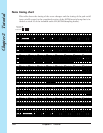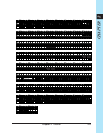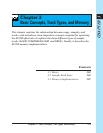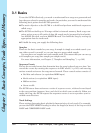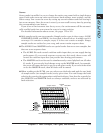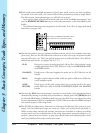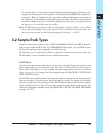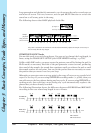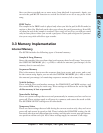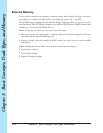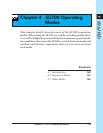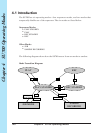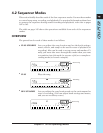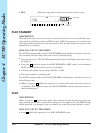
Chapter 3
Basic Concepts, Track Types, and Memory
135
CHAPTER 3
You are also free to control the sound of songs in real time during performance: for
example, by hitting pads, turning knobs, and adjusting the BPM while playback is
in progress. But you should also be aware that realtime adjustments you make on
any track may be cancelled by subsequent sequence data recorded on that track; if
you wish to make active use of realtime adjustments, therefore, you should set up
the song so as to avoid this type of conflict.
◆ The SU700 internal memory will lose all samples, sequence data, scenes, effect
setup, and track settings when power goes off. If you wish to retain your work, you
must save your results to disk before turning off the unit. (→ p.287)
3.2 Sample-Track Types
Sample tracks come in three types: LOOP, COMPOSED LOOP, and FREE. Specifi-
cally, you get eight LOOP tracks, 16 COMPOSED LOOP tracks, and 16 FREE tracks.
Each track type reproduces samples in a different way.
By allowing you to utilize three different playback methods at the same time, the
SU700 makes it easy to build effective, multifaceted songs.
LOOP Tracks
Each loop track automatically plays out its entire sample (from start point to end
point) repeatedly, as a continuous loop. The loop is defined by its loop length, in
beats: if the loop length is 4, for example, then the sample plays out once every four
beats. You can set (or change) the loop length using the TRACK SET | SETUP job’s
LOOP LENGTH setting.
The SU700 automatically adjusts the sample so that it exactly fits the loop-length at
the current tempo. (If you increase the loop length or reduce the tempo, for example,
then the sample must be prolonged.) The SU700 adjusts the sample either by chang-
ing the sample’s pitch or else by slicing the sample up and adjusting the pieces; you
select the adjustment method using the TRACK SET | SETUP job’s BPM TRACKING
setting (→p. 237).




